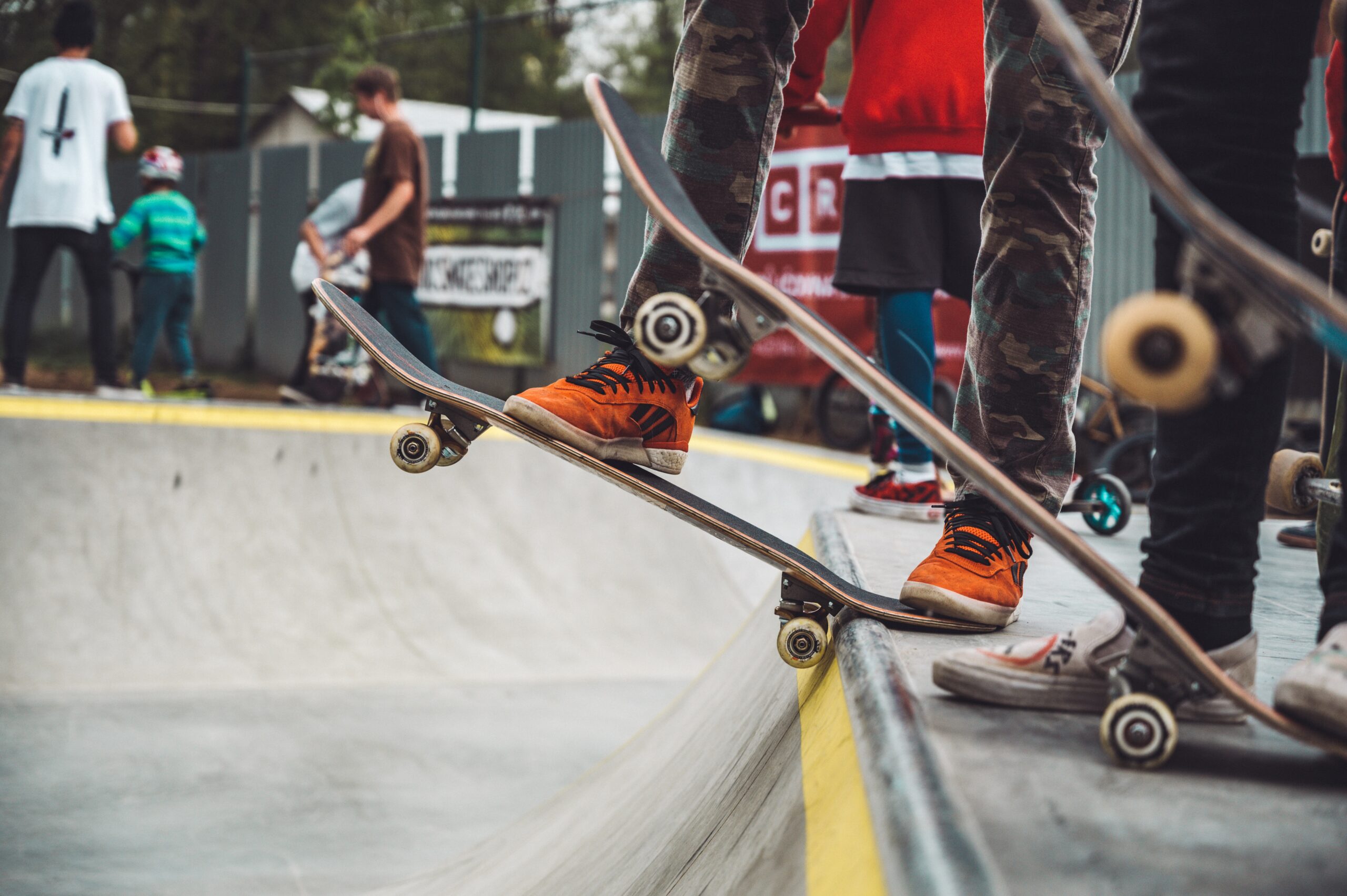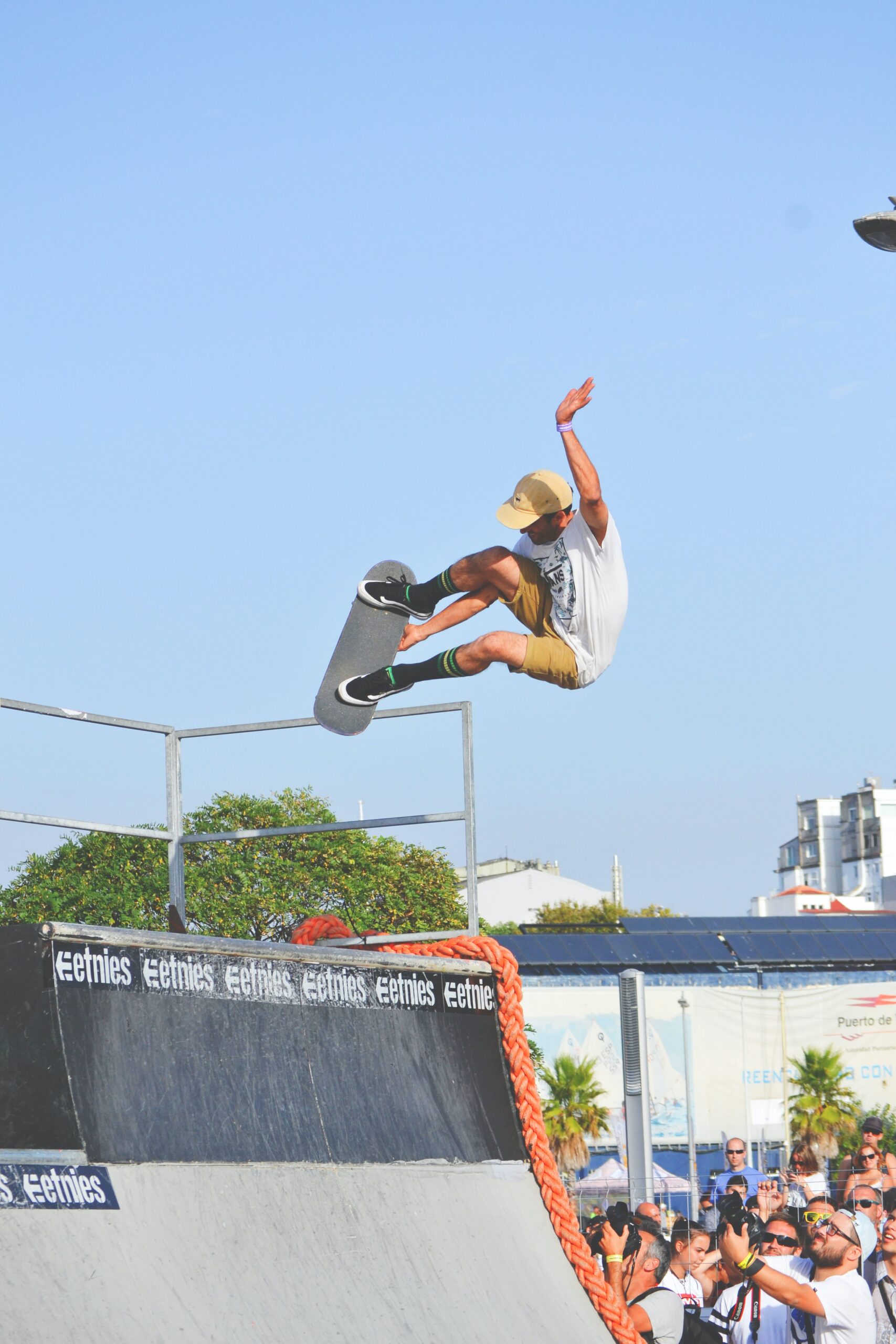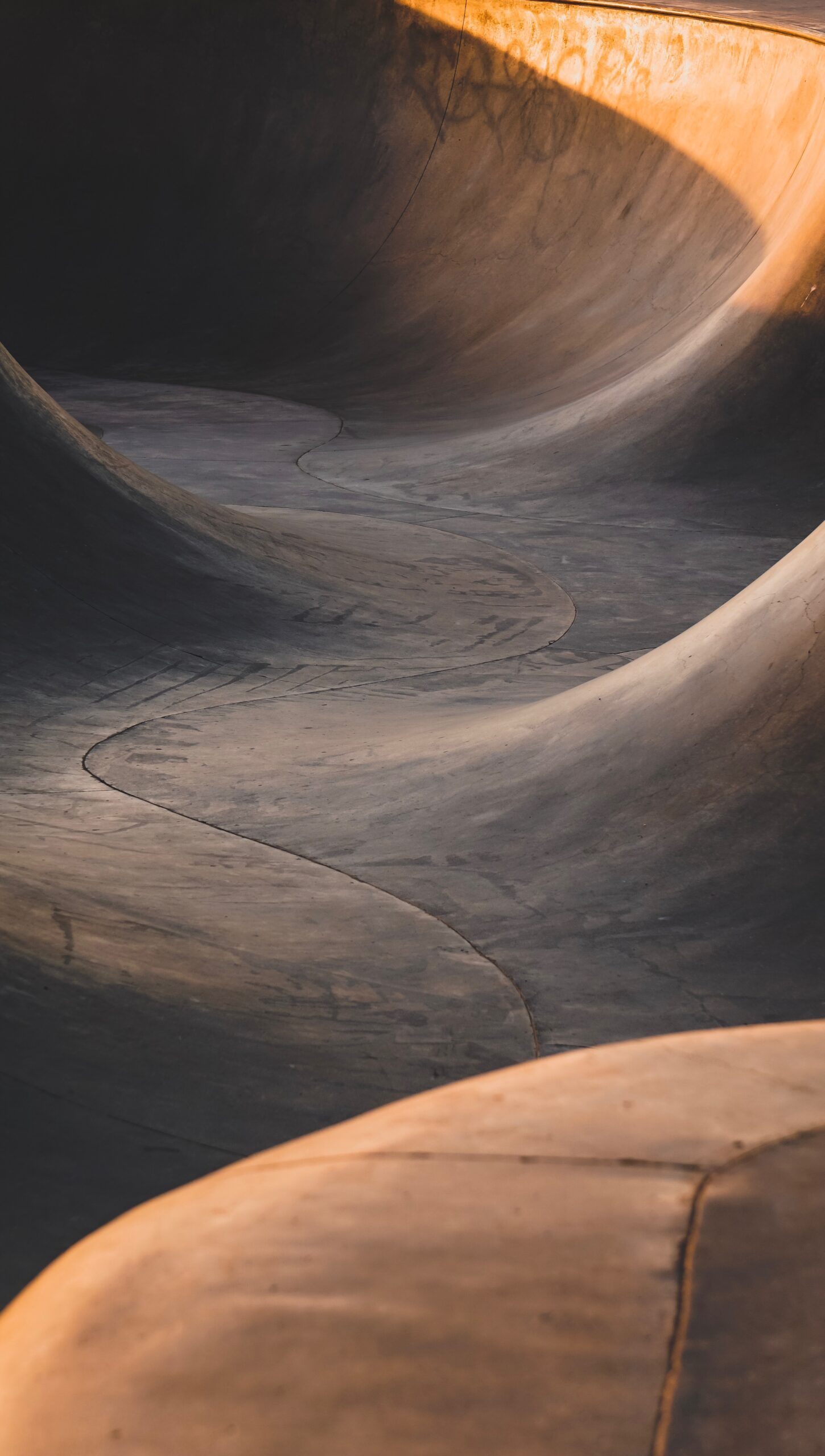Skateboarding is a thrilling sport that offers a rush of adrenaline and a sense of freedom like no other. If you’re looking to take your skateboarding skills to the next level, then mastering the art of mini ramps and halfpipes is a must. These obstacles may seem intimidating at first, but with the right techniques and a whole lot of practice, you’ll be able to conquer them in no time. In this article, we’ll explore some of the key strategies and tips that will help you become a pro at navigating mini ramps and halfpipes, allowing you to showcase your skills and impress your friends at the skatepark. Get ready to grab your board and ride the ramp to success! Skateboarding is an exhilarating sport that allows you to showcase your skills and express your creativity. Whether you are a beginner or an experienced skateboarder, mastering the art of skateboarding mini ramps and halfpipes can take your skills to the next level. In this article, we will guide you through the different types of ramps and halfpipes, provide tips on getting started, discuss basic techniques, delve into mini ramp skills and halfpipe skills, share safety tips and precautions, explain how to maintain your skateboard, offer advice on building confidence and persistence, discuss finding your style, and explore joining skateboarding communities.

Types of Ramps and Halfpipes
When it comes to skateboarding, ramps and halfpipes are essential features of any skate park. They provide opportunities for skateboarders to perform various tricks and maneuvers. Two popular types of ramps and halfpipes are mini ramps and halfpipes.
Mini Ramps
Mini ramps are smaller versions of traditional ramps and halfpipes. They usually have a height ranging from 2 to 6 feet and are characterized by their curved shape. Mini ramps are ideal for skateboarders who are looking to enhance their skills and practice different tricks in a controlled environment.
Halfpipes
Halfpipes are larger structures that resemble a U-shaped channel. They are typically constructed with two quarter pipes facing each other and connected in the middle. Halfpipes come in various sizes, ranging from 6 feet to over 20 feet in width. Skaters can gain significant momentum and perform more advanced tricks on halfpipes compared to mini ramps.
Getting Started
Before embarking on your skateboarding journey on mini ramps and halfpipes, it is important to ensure that you have the right equipment and suitable protective gear. Here are some key steps to get started:
Choose the Right Skateboard
Selecting the right skateboard plays a crucial role in your ability to perform tricks and maneuvers effectively. Consider factors such as deck size, wheel hardness, and truck tightness when choosing a skateboard. Experiment with different setups to find the one that suits your style and preferences.
Wear Protective Gear
Skateboarding can be physically demanding and potentially dangerous, so wearing protective gear is a must. Prioritize safety by wearing a helmet, knee pads, elbow pads, and wrist guards. These protective gears can greatly reduce the risk of injuries while skateboarding.
Find a Suitable Skate Park
Finding a suitable skate park with mini ramps and halfpipes is essential for mastering your skateboarding skills. Look for local skate parks that have well-maintained ramps and suitable terrain for skateboarding. Familiarize yourself with the park’s rules and etiquette to ensure a safe and enjoyable experience.

Basic Techniques
Before attempting more advanced tricks, it’s important to master the basic techniques. These techniques lay the foundation for your skateboarding skills and help you build confidence on mini ramps and halfpipes. Here are some key techniques to focus on:
Foot Positioning
Proper foot positioning is crucial for maintaining balance and stability while skateboarding. Place your front foot perpendicular to the skateboard with the toes slightly angled towards the front. Position your back foot horizontally across the tail of the skateboard for optimal control.
Pushing off and Balancing
To gain momentum, push off the ground with your back foot while keeping your front foot on the skateboard. Once you start rolling, maintain balance by keeping your knees slightly bent and your weight centered over the skateboard. Practice pushing off and maintaining balance to build your skateboarding skills.
Turning and Carving
Turning and carving are essential skills for maneuvering on a mini ramp or halfpipe. To turn, lean your body weight towards the direction you want to go and apply pressure on the toes or heels of your feet. Carving involves making smooth, sweeping turns by leaning into the curves while maintaining control.
Pumping for Speed
Pumping is a technique used to generate speed on a mini ramp or halfpipe without the need for pushing. By shifting your body weight and using the transitions of the ramp, you can gain speed and maintain momentum. Practice pumping by using your legs to absorb and extend, propelling yourself forward with each motion.
Mini Ramp Skills
Once you have mastered the basic techniques, it’s time to explore the specific skills required for riding and performing tricks on a mini ramp. Here are some essential mini ramp skills to focus on:
Approaching the Mini Ramp
Approaching the mini ramp requires confidence and control. Start by rolling towards the ramp at a comfortable speed. As you approach the ramp, crouch down slightly and prepare to transition onto the ramp smoothly. Maintain balance and keep your eyes focused on the transition for a seamless entry.
Basic Tricks on Mini Ramps
Start with basic tricks such as dropping in, kickturns, and ollies. Dropping in involves rolling down the ramp from the top, smoothly transitioning onto the ramp surface. Kickturns involve pivoting on the back or front truck to change direction while rolling. Ollies are performed by popping the tail of the skateboard down and jumping, lifting the skateboard off the ground.
Intermediate Tricks on Mini Ramps
Once you have mastered the basic tricks, progress to intermediate tricks such as axle stalls, rock to fakies, and grinds. Axle stalls involve coming to a stop on the coping or deck of the ramp, balancing on the truck axle before transitioning back in. Rock to fakies are achieved by riding up the ramp, rocking back to the tail or nose, and transitioning back down in the opposite direction. Grinds involve sliding along the edge of the coping with either the trucks or skateboard deck.
Advanced Tricks on Mini Ramps
For those looking to push their skills to the limit, advanced tricks on mini ramps offer the ultimate challenge. Attempt tricks such as airs, lip tricks, and flip tricks. Aires involve launching yourself off the ramp and performing maneuvers in mid-air before landing back on the ramp. Lip tricks are performed by utilizing the coping or deck of the ramp to perform various slides and maneuvers. Flip tricks involve using the pop and flick of the skateboard to perform rotations and flips while in the air.

Halfpipe Skills
Halfpipes provide a larger platform for skaters to showcase their skills and perform more advanced tricks. Building upon the basic techniques, here are some essential halfpipe skills to focus on:
Approaching the Halfpipe
Approaching the halfpipe requires confidence and a solid understanding of speed management. Start by rolling comfortably towards the halfpipe, ensuring a smooth transition from flat to vertical. As you approach the halfpipe, crouch down slightly and prepare to shift your weight to transition onto the ramp.
Basic Tricks on Halfpipes
Begin with basic tricks such as dropping in, kickturns, and grind stalls. Dropping in on a halfpipe involves rolling into it from the top, ensuring a smooth transition onto the ramp surface. Kickturns can be performed by pivoting on the back or front truck to change direction while rolling on the halfpipe. Grind stalls involve stalling or sliding on the coping or deck while maintaining balance.
Intermediate Tricks on Halfpipes
Once you have mastered the basic tricks on halfpipes, progress to intermediate tricks such as backside/frontside airs, rock and roll slides, and board slides. Backside/frontside airs involve launching off the halfpipe and performing mid-air turns while maintaining control. Rock and roll slides are performed by riding up the halfpipe, leaning back and placing the tail of the skateboard on the coping before sliding back down. Board slides involve sliding along the edge of the coping or deck with the underside or top of the skateboard.
Advanced Tricks on Halfpipes
For advanced skaters, the halfpipe offers endless possibilities for pushing the limits. Attempt tricks such as alley-oops, 540s, and lip tricks. Alley-oops involve rotating in the opposite direction of your regular stance while in mid-air. 540s are performed by rotating the skateboard 540 degrees in the air before landing. Lip tricks on a halfpipe involve utilizing the coping or deck to perform various aerial slides, stalls, or grinds.
Safety Tips and Precautions
Skateboarding, especially on ramps and halfpipes, can be physically demanding and potentially dangerous. It is essential to prioritize safety and take necessary precautions to minimize the risk of injuries. Here are some safety tips to keep in mind:
Warming Up and Stretching
Before engaging in any physical activity, it’s important to warm up your muscles and stretch properly. Engage in light cardio exercises to warm up your body, followed by stretching exercises that focus on the muscles you will be using while skateboarding. Proper warm-up and stretching can help prevent muscle strains and injuries.
Start Slow and Progress Gradually
When learning new tricks or techniques, it’s crucial to start slow and progress gradually. Attempting advanced tricks without the necessary skills can lead to injuries. Master the basics and gradually increase the difficulty level of tricks as you build confidence and proficiency.
Learn to Fall Safely
Falling is an inevitable part of skateboarding, but learning to fall safely can significantly reduce the risk of serious injuries. Practice falling techniques such as rolling, tucking, and sliding to minimize the impact and avoid landing on your wrists or head. Learning how to distribute your weight during a fall can make a significant difference in preventing injuries.
Avoid Overexertion and Fatigue
Skateboarding requires physical stamina and mental focus. Avoid pushing yourself too hard or skateboarding when you are tired, as this can lead to diminished reflexes and increase the risk of accidents. Take breaks when needed and listen to your body to avoid overexertion and fatigue.
Maintaining Your Skateboard
To ensure optimal performance and safety, it’s important to regularly maintain your skateboard. Here are some key maintenance tips:
Cleaning and Lubricating Bearings
The bearings are essential components of your skateboard that enable smooth and efficient rolling. Clean them regularly using a skateboard bearing cleaner or solvent and lubricate them with skateboard-specific bearing oil to prevent dirt buildup and ensure smooth spinning.
Inspecting and Replacing Wheels
Regularly inspect your skateboard wheels for wear and tear. Replace worn-out wheels to maintain optimal grip and performance. Choose wheels that suit your skateboarding style and the terrain you’ll be riding on. Softer wheels provide better grip on smoother surfaces, while harder wheels are better for tricks and ramps.
Adjusting Trucks for Stability
Truck adjustment plays a crucial role in maintaining stability and control. Experiment with different levels of truck tightness to find the optimal setting for your skateboarding style. Tighter trucks offer more stability but can limit maneuverability, while looser trucks provide greater flexibility but may impact stability.
Building Confidence and Persistence
Skateboarding is a sport that requires practice, patience, and perseverance. Here are some tips for building confidence and persistence in your skateboarding journey:
Practice Consistently
Consistency is key when it comes to improving your skateboarding skills. Dedicate regular time slots to practice and focus on specific techniques and tricks. The more you practice, the more comfortable and confident you become on the mini ramp and halfpipe.
Set Goals and Track Progress
Setting goals and tracking your progress can be a great motivator. Start with small, achievable goals and gradually work your way up to more challenging tricks and maneuvers. Celebrate your accomplishments along the way, and use your progress as inspiration to push yourself further.
Overcoming Fear and Getting Back Up
Skateboarding can be intimidating, especially when attempting new tricks or maneuvers. Overcoming fear is a crucial part of building confidence. Remember that falling is a natural part of skateboarding, and getting back up after a fall is a testament to your resilience. Embrace the challenges and believe in your ability to conquer them.
Seek Tips and Inspiration from Experienced Skaters
Skateboarding communities are filled with experienced skateboarders who are always willing to share their knowledge and offer advice. Seek out tips and guidance from more experienced skaters at your local skate park or online communities. Drawing inspiration from others can fuel your motivation and help accelerate your progress.
Finding Your Style
Skateboarding is an art form that allows individuals to express their creativity and unique style. Here are a few tips for finding your own style:
Experiment with Different Tricks
Skateboarding offers a wide range of tricks and maneuvers to explore. Experiment with different tricks and techniques to find the ones that resonate with you. You might find that you excel in certain types of tricks or gravitate towards a specific style of skateboarding, such as street or vert.
Developing Your Own Unique Moves
While it’s important to learn and practice established tricks, don’t be afraid to develop your own unique moves. Skateboarding is all about self-expression, and adding your personal flair to tricks can set you apart and make your skateboarding style truly one-of-a-kind.
Exploring Different Skateboarders and Styles
Expand your knowledge and inspiration by exploring different skateboarders and styles. Watch videos, follow skateboarding magazines and social media accounts, and attend skateboarding events to expose yourself to different styles of skateboarding. This exposure can help you discover new tricks, techniques, and trends that resonate with you.
Joining Skateboarding Communities
Connecting with other skateboarders is a great way to enhance your skateboarding experience. Here are a few ways to join skateboarding communities:
Local Skateboarding Clubs and Groups
Many cities and towns have local skateboarding clubs and groups that organize events, meetups, and skate sessions. Joining these communities provides an opportunity to meet like-minded individuals, learn from others, and share your skateboarding journey.
Online Skateboarding Forums and Communities
The internet offers a wealth of online skateboarding forums and communities where you can connect with skateboarders from around the world. Participate in discussions, ask questions, and share your progress. These communities provide a platform for learning, exchanging ideas and experiences, and seeking advice.
Competitions and Events
Competitions and events are a great way to immerse yourself in the skateboarding community and showcase your skills. Participate in local skateboarding competitions or attend larger events to witness the talent and skills of experienced skateboarders. These events create an atmosphere of camaraderie and inspiration within the skateboarding community.
In conclusion, mastering the art of skateboarding on mini ramps and halfpipes requires time, dedication, and persistence. Starting with the right equipment, building a strong foundation of basic techniques, and gradually progressing to more advanced tricks will pave the way to becoming a skilled skateboarder. Prioritizing safety, maintaining your skateboard, and finding your unique style are also important aspects of your skateboarding journey. By joining skateboarding communities, you can connect with fellow skateboarders, gain inspiration from experienced skaters, and share your passion for this thrilling sport. So grab your skateboard, hit the ramps and halfpipes, and let your creativity soar! Happy skateboarding!

